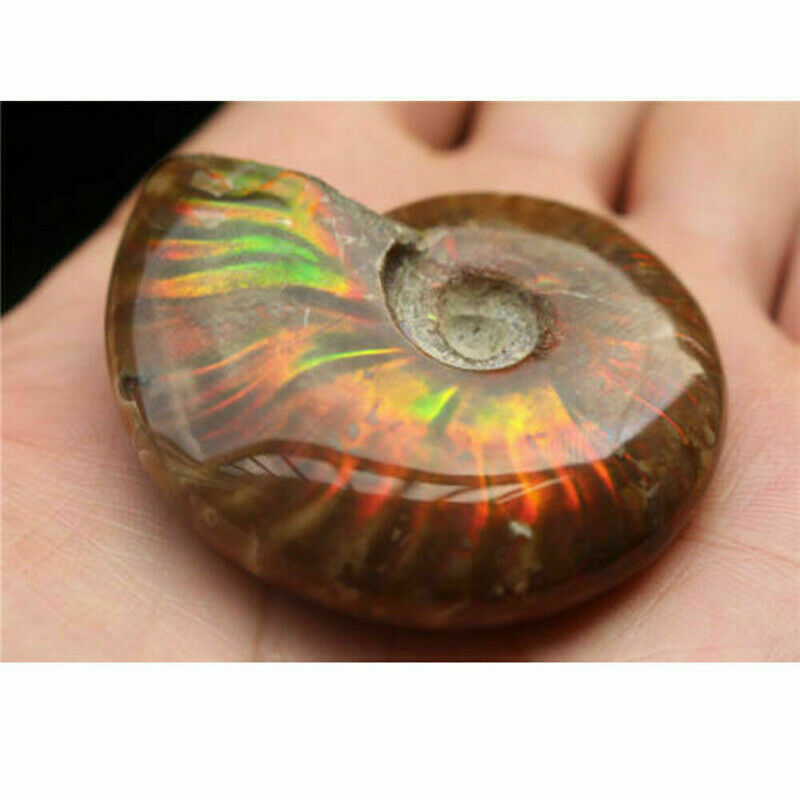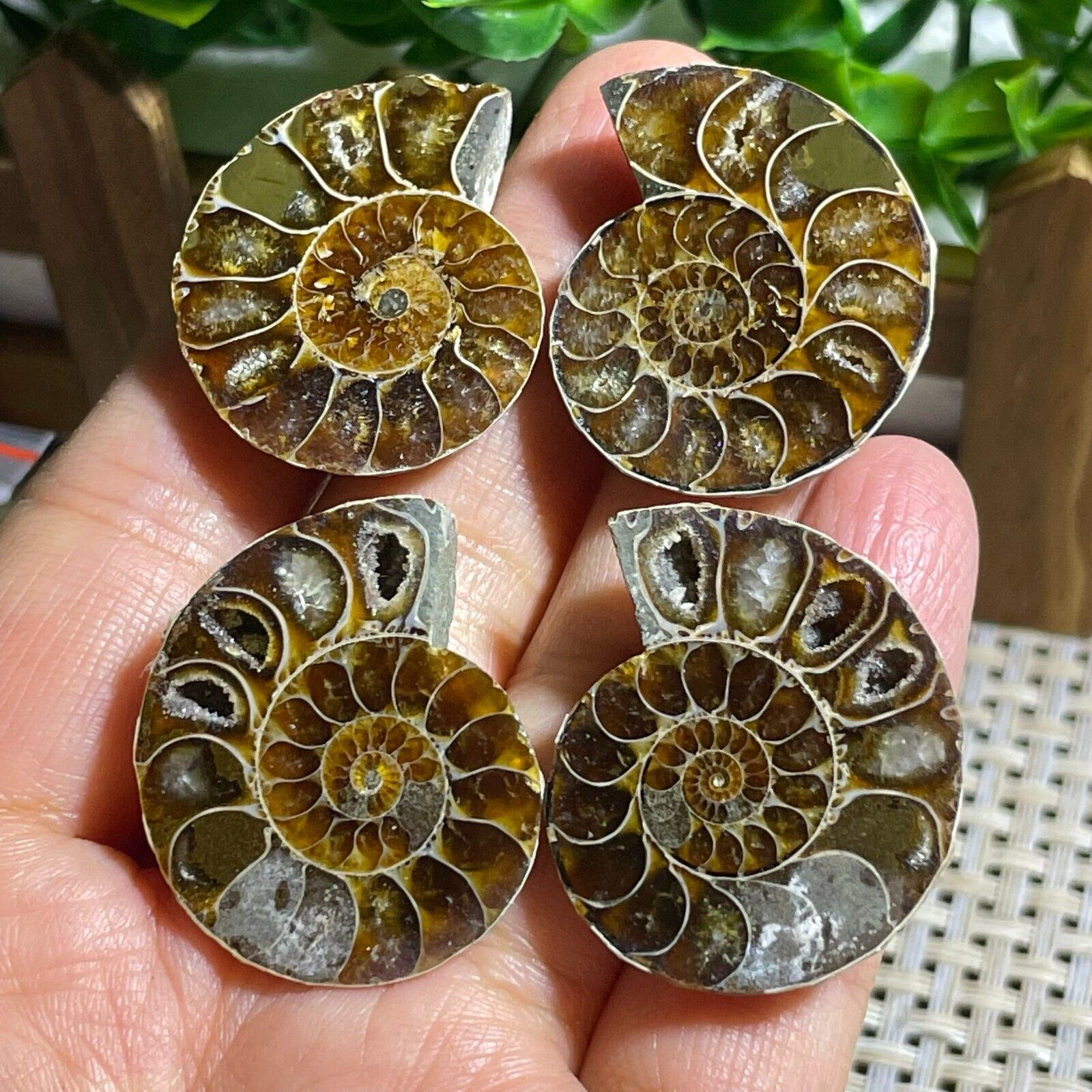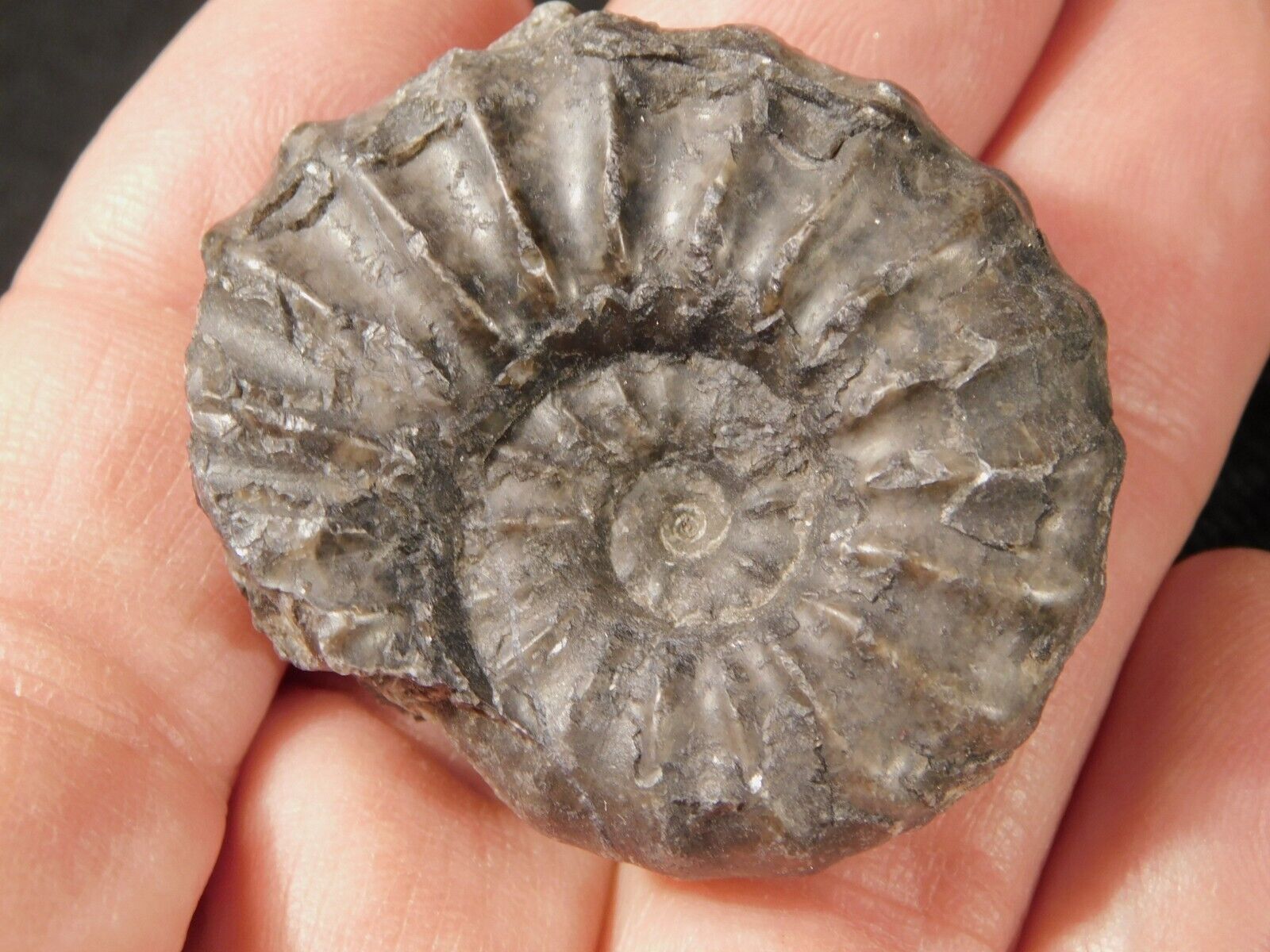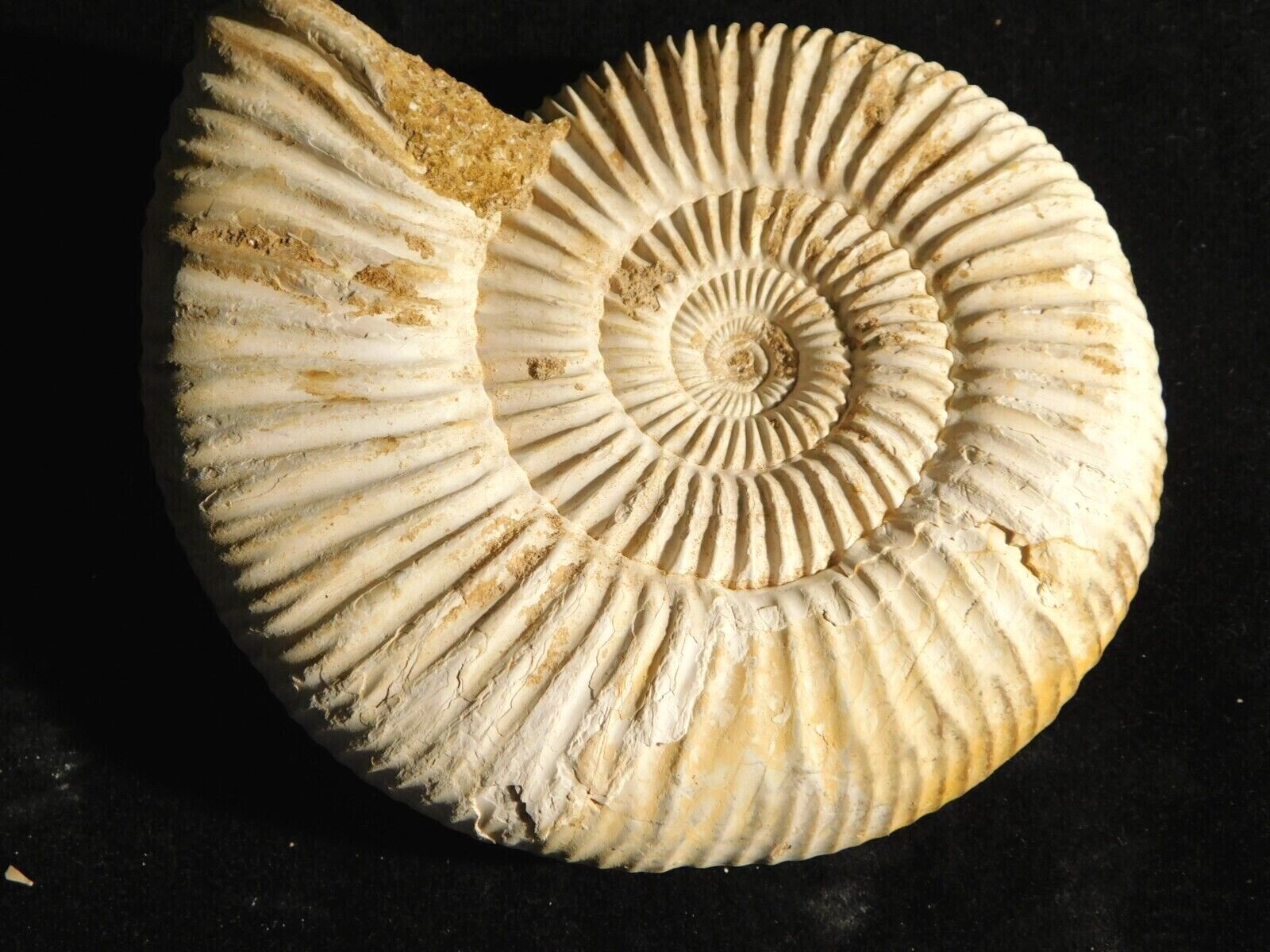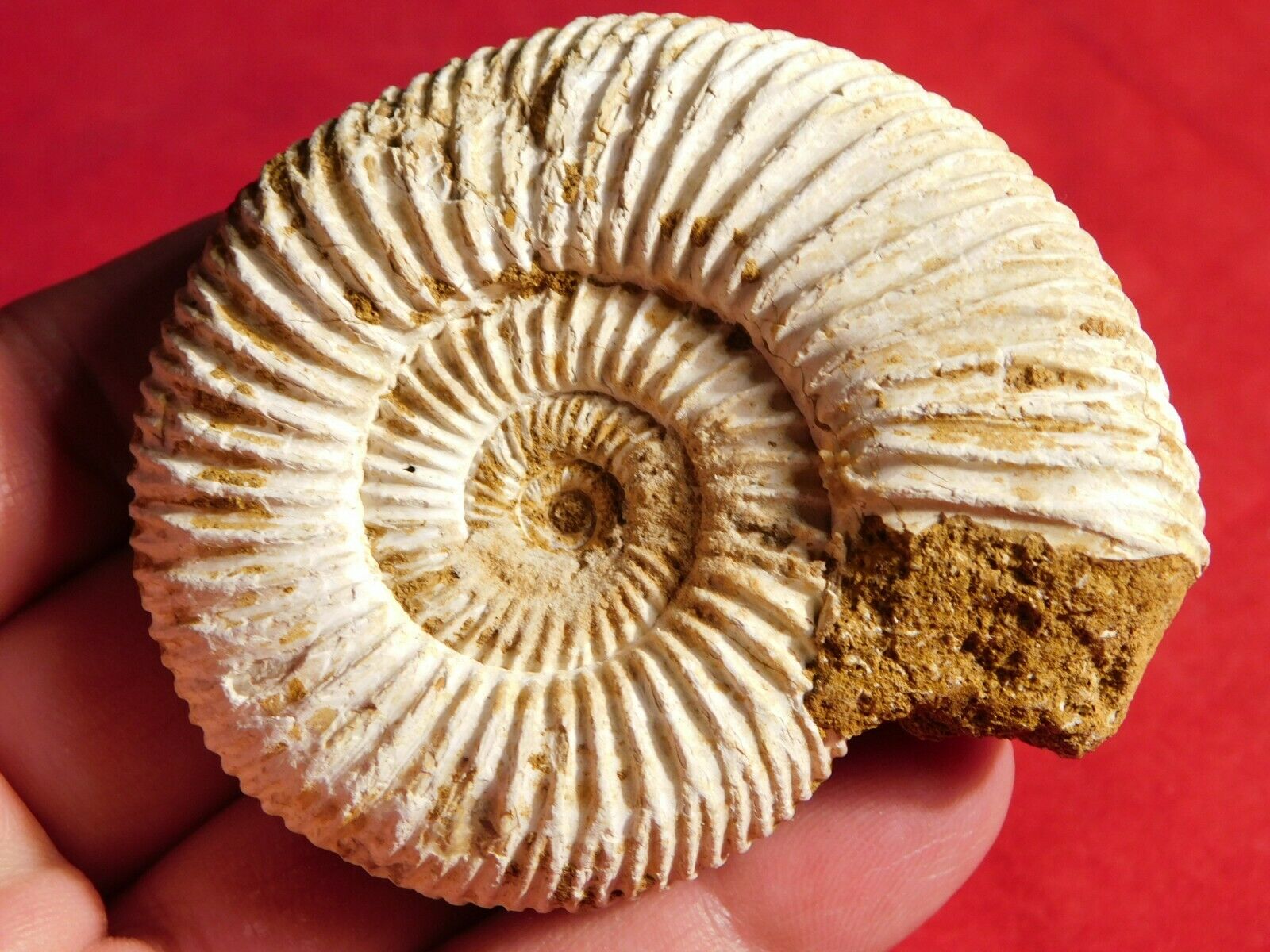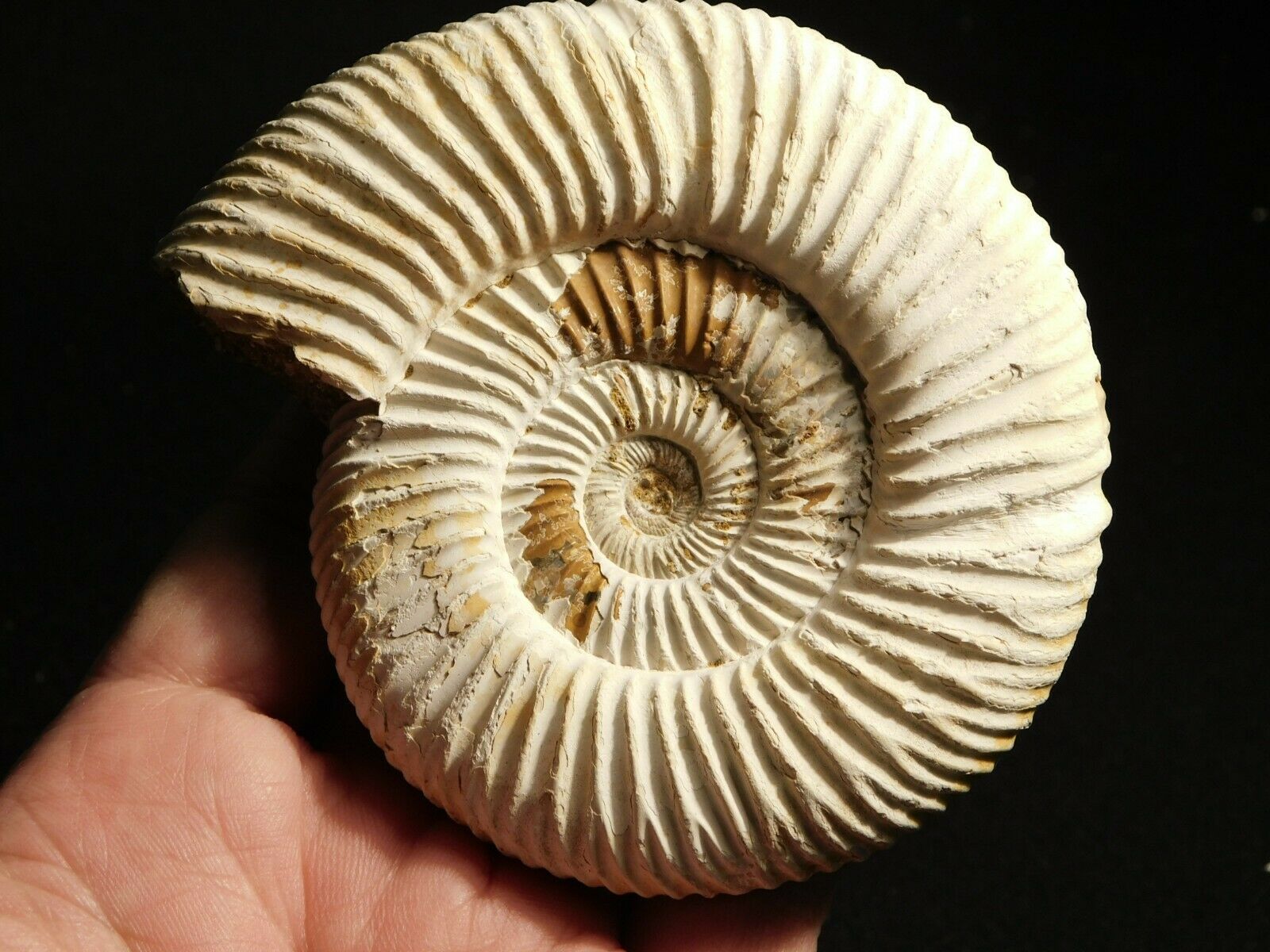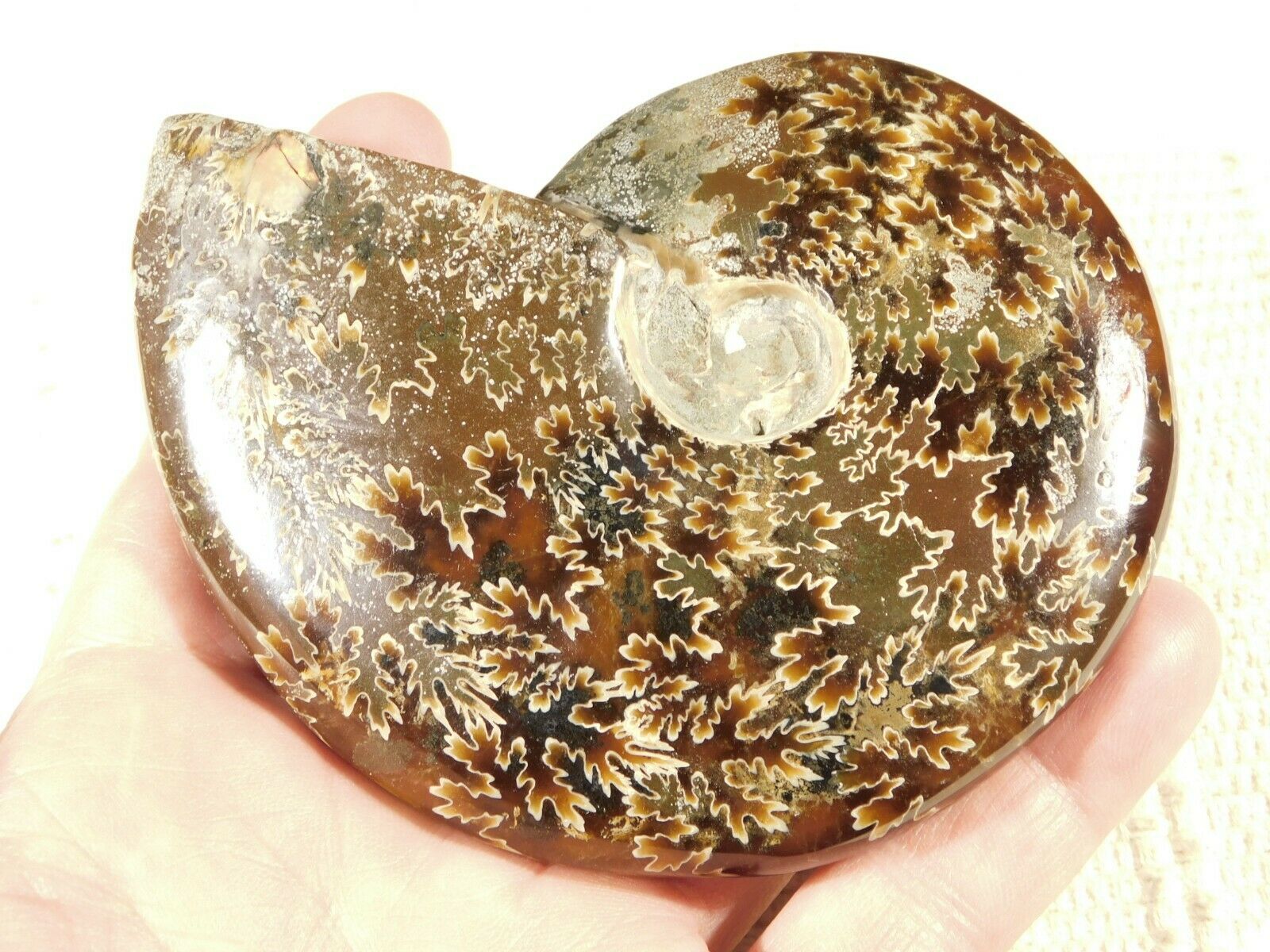-40%
BEAUTIFUL iridescent Ammonite Fossil Opalized Ammolite MADAGASCAR Nautilus Opal
$ 6.83
- Description
- Size Guide
Description
This specimen weighs 12.07grams. It measures 31 mm x 26 mm x 11 mm.
I offer a shipping discount for customers who combine their payments for multiple purchases into one payment!
The discount is regular shipping price for the first item and just 50 cents for each additional item!
To be sure you get your shipping discount just make sure all the items you want to purchase are in your cart.
Auctions you win are added to your cart automatically.
For any "buy it now" items or second chance offers, be sure to click the "add to cart" button, NOT the "buy it now" button.
Once all of your items are in your cart just pay for them from your cart and the combined shipping discount should be applied automatically.
I offer a money back guarantee on every item I sell.
If you are not 100% happy with your purchase just send me a message to let me know
and I will buy back the item for your full purchase price.
Hi there. I am selling this really amazing iridescent ammonite fossil. I bought it at a gem show in Arizona and it was found in Madagascar. It's very detailed and interesting. The colorful iridescence is absolutely beautiful! Fossils are the remains of animals that have been replaced by minerals. This animal (similar to a nautilus) happens to be replaced with opalescent minerals. I hope it finds a good home out there. Thanks for visiting my Ebay store and have a great day!
Here's some info about this specimen from wikipedia:
Ammonoidea
From Wikipedia, the free encyclopedia
(Redirected from Ammonite)
"Ammonite" redirects here. For other uses, see Ammonite (disambiguation).
Not to be confused with Amniote.
Ammonoidea
Temporal range: 400–66 Ma
PreЄЄOSDCPTJKPgN
Devonian – Cretaceous
Asteroceras BW.jpg
Artist's reconstruction of Asteroceras
Scientific classification e
Kingdom:
Animalia
Phylum:
Mollusca
Class:
Cephalopoda
Subclass:
†Ammonoidea
Zittel, 1884
Orders and Suborders
See text
Ammonoids are an extinct group of marine mollusc animals in the subclass Ammonoidea of the class Cephalopoda. These molluscs are more closely related to living coleoids (i.e., octopuses, squid, and cuttlefish) than they are to shelled nautiloids such as the living Nautilus species. The earliest ammonites appear during the Devonian, and the last species died out during the Cretaceous–Paleogene extinction event.
Ammonites are excellent index fossils, and it is often possible to link the rock layer in which a particular species or genus is found to specific geologic time periods. Their fossil shells usually take the form of planispirals, although there were some helically spiraled and nonspiraled forms (known as heteromorphs).
The name "ammonite", from which the scientific term is derived, was inspired by the spiral shape of their fossilized shells, which somewhat resemble tightly coiled rams' horns. Pliny the Elder (d. 79 AD near Pompeii) called fossils of these animals ammonis cornua ("horns of Ammon") because the Egyptian god Ammon (Amun) was typically depicted wearing ram's horns.[1] Often the name of an ammonite genus ends in -ceras, which is Greek (κέρας) for "horn".
Contents [hide]
1
Diagnostic characters
1.1
Septa
1.2
Suture patterns
1.3
Siphuncle
2
Classification
2.1
Orders and suborders
2.2
Taxonomy of the Treatise on Invertebrate Paleontology
3
Life
4
Shell anatomy and diversity
4.1
Basic shell anatomy
4.2
Sexual dimorphism
4.3
Variations in shape
4.4
Aptychus
5
Soft-part anatomy
6
Size
7
Distribution
8
Extinction
9
Cultural significance
10
Terminological note
11
See also
12
References
13
External links
Diagnostic characters[edit]
Ammonites (subclass Ammonoidea) can be distinguished by their septa, the dividing walls that separate the chambers in the phragmocone, by the nature of their sutures where the septa joint the outer shell wall, and in general by their siphuncles.
Septa[edit]
Ammonite interiors showing septa; Pierre Shale, Upper Cretaceous, South Dakota
Ammonoid septa characteristically have bulges and indentations and are to varying degrees convex from the front, distinguishing them from nautiloid septa which are typically simple concave dish-shaped structures. The topology of the septa, especially around the rim, results in the various suture patterns found.
Suture patterns[edit]
Three major types of suture patterns are found in the Ammonoidea:
Goniatitic - numerous undivided lobes and saddles; typically 8 lobes around the conch. This pattern is characteristic of the Paleozoic ammonoids.
Ceratitic - lobes have subdivided tips, giving them a saw-toothed appearance, and rounded undivided saddles. This suture pattern is characteristic of Triassic ammonoids and appears again in the Cretaceous "pseudoceratites".
Ammonitic - lobes and saddles are much subdivided (fluted); subdivisions are usually rounded instead of saw-toothed. Ammonoids of this type are the most important species from a biostratigraphical point of view. This suture type is characteristic of Jurassic and Cretaceous ammonoids, but extends back all the way to the Permian.
Siphuncle[edit]
The siphuncle in most ammonoids is a narrow tubular structure that runs along the shell's outer rim, known as the venter, connecting the chambers of the phragmocone to the body or living chamber. This distinguishes them from living nautiloides (Nautilus and Allonautilus) and typical Nautilida, in which the siphuncle runs through the center of each chamber. However the very earliest nautiloids from the Late Cambrian and Ordovician typically had ventral siphuncles like ammonites, although often proportionally larger and more internally structured. The word "siphuncle" comes from the New Latin siphunculus, meaning "little siphon".
Classification[edit]
An ammonite shell viewed in section, revealing the internal chambers and septa. Large polished examples are prized for their aesthetic, as well as scientific, value.
See also: List of ammonite genera
Originating from within the bactritoid nautiloids, the ammonoid cephalopods first appeared in the Devonian (circa 400 million years ago) and became extinct at the close of the Cretaceous (66 Mya) along with the dinosaurs. The classification of ammonoids is based in part on the ornamentation and structure of the septa comprising their shells' gas chambers; by these and other characteristics we can divide subclass Ammonoidea into three orders and eight known suborders. While nearly all nautiloids show gently curving sutures, the ammonoid suture line (the intersection of the septum with the outer shell) is variably folded, forming saddles (or peaks) and lobes (or valleys).
Orders and suborders[edit]
An ammonitic ammonoid with the body chamber missing, showing the septal surface (especially at right) with its undulating lobes and saddles.
Iridescent ancient ammonite fossil on display at the American Museum of Natural History, New York City, around 2.5 feet in diameter
The Ammonoidea can be divided into eight orders, listed here starting with the most primitive and going to the more derived:
Anarcestida, Devonian
Clymeniida, Upper Devonian
Goniatitida, Middle Devonian - Upper Permian
Prolecanitida, Upper Devonian - Upper Triassic
Ceratitida, Permian - Triassic
Phylloceratida, Triassic - Cretaceous
Lytoceratida, Jurassic - Cretaceous
Ammonitida, Lower Jurassic - Upper Cretaceous
In some classifications, these are left as suborders, included in only three orders: Goniatitida, Ceratitida, and Ammonitida.
Taxonomy of the Treatise on Invertebrate Paleontology[edit]
The Treatise on Invertebrate Paleontology (Part L, 1957) divides the Ammonoidea, regarded simply as an order, into eight suborders, the Anarcestina, Clymeniina, Goniatitina, and Prolecanitina from the Paleozoic; the Ceratitina from the Triassic; and the Ammonitina, Lytoceratina, and Phylloceratina from the Jurassic and Cretaceous. In subsequent taxonomies, these are sometimes regarded as orders within the subclass Ammonoidea.
Life[edit]
Fossil shell of ammonite Placenticeras whitfieldi showing punctures caused by the bite of a mosasaur, Peabody Museum of Natural History, Yale
Jeletzkytes, a Cretaceous ammonite from the USA
Asteroceras, a Jurassic ammonite from England
Orthosphynctes, a Jurassic ammonite from Portugal
Because ammonites and their close relatives are extinct, little is known about their way of life. Their soft body parts are very rarely preserved in any detail. Nonetheless, much has been worked out by examining ammonoid shells and by using models of these shells in water tanks.
Many ammonoids probably lived in the open water of ancient seas, rather than at the sea bottom, because their fossils are often found in rocks laid down under conditions where no bottom-dwelling life is found. Many of them (such as Oxynoticeras) are thought to have been good swimmers, with flattened, discus-shaped, streamlined shells, although some ammonoids were less effective swimmers and were likely to have been slow-swimming bottom-dwellers. Synchrotron analysis of an aptychophoran ammonite revealed remains of isopod and mollusc larvae in its buccal cavity, indicating at least this kind of ammonite fed on plankton.[2] They may have avoided predation by squirting ink, much like modern cephalopods; ink is occasionally preserved in fossil specimens.[3]
The soft body of the creature occupied the largest segments of the shell at the end of the coil. The smaller earlier segments were walled off and the animal could maintain its buoyancy by filling them with gas. Thus, the smaller sections of the coil would have floated above the larger sections.[4]
Many ammonite shells have been found with round holes once interpreted as a result of limpets attaching themselves to the shells. The triangular formation of the holes, their size and shape, and their presence on both sides of the shells, corresponding to the upper and lower jaws, is evidence of the bite of a medium-sized mosasaur preying upon ammonites.
Shell anatomy and diversity[edit]
Basic shell anatomy[edit]
A variety of ammonite forms, from Ernst Haeckel's 1904 Kunstformen der Natur (Art Forms of Nature)
Baculites ammonite from the Late Cretaceous of Wyoming: The original aragonite of the outer conch and inner septa has dissolved away, leaving this articulated internal mold.
The chambered part of the ammonite shell is called a phragmocone. It contains a series of progressively larger chambers, called camerae (sing. camera) that are divided by thin walls called septa (sing. septum). Only the last and largest chamber, the body chamber, was occupied by the living animal at any given moment. As it grew, it added newer and larger chambers to the open end of the coil. Where the outer whorl of an ammonite shell largely covers the preceding whorls, the specimen is said to be involute (e.g., Anahoplites). Where it does not cover those preceding, the specimen is said to be evolute (e.g., Dactylioceras).
A thin living tube called a siphuncle passed through the septa, extending from the ammonite's body into the empty shell chambers. Through a hyperosmotic active transport process, the ammonite emptied water out of these shell chambers. This enabled it to control the buoyancy of the shell and thereby rise or descend in the water column.
A primary difference between ammonites and nautiloids is the siphuncle of ammonites (excepting Clymeniina) runs along the ventral periphery of the septa and camerae (i.e., the inner surface of the outer axis of the shell), while the siphuncle of nautiloids runs more or less through the center of the septa and camerae.
Sexual dimorphism[edit]
Discoscaphites iris, Owl Creek Formation (Upper Cretaceous), Ripley, Mississippi.
One feature found in shells of the modern Nautilus is the variation in the shape and size of the shell according to the sex of the animal, the shell of the male being slightly smaller and wider than that of the female. This sexual dimorphism is thought to be an explanation for the variation in size of certain ammonite shells of the same species, the larger shell (the macroconch) being female, and the smaller shell (the microconch) being male. This is thought to be because the female required a larger body size for egg production. A good example of this sexual variation is found in Bifericeras from the early part of the Jurassic period of Europe.
Only recently has sexual variation in the shells of ammonites been recognized. The macroconch and microconch of one species were often previously mistaken for two closely related but different species occurring in the same rocks. However, because these "pairs" were so consistently found together it became apparent they were, in fact, sexual forms of the same species.
Variations in shape[edit]
The majority of ammonite species feature planispiral, flat-coiled shells, but other species feature nearly straight (as in baculites) shells. Still other species' shells are coiled helically, superficially like that of a large gastropod (as in Turrilites and Bostrychoceras). Some species' shells are even initially uncoiled, then partially coiled, and finally straight at maturity (as in Australiceras). These partially uncoiled and totally uncoiled forms began to diversify mainly during the early part of the Cretaceous and are known as heteromorphs.
Perhaps the most extreme and bizarre-looking example of a heteromorph is Nipponites, which appears to be a tangle of irregular whorls lacking any obvious symmetric coiling. Upon closer inspection, though, the shell proves to be a three-dimensional network of connected "U" shapes. Nipponites occurs in rocks of the upper part of the Cretaceous in Japan and the United States.
Ammonites vary greatly in the ornamentation (surface relief) of their shells. Some may be smooth and relatively featureless, except for growth lines, and resemble that of the modern Nautilus. In others, various patterns of spiral ridges and ribs or even spines are shown. This type of ornamentation of the shell is especially evident in the later ammonites of the Cretaceous.
Aptychus[edit]
Main article: Aptychus
A drawing of an aptychus which was mistakenly described as a bivalve and given the name "Trigonellites latus", from the Kimmeridge Clay Formation in England
Some ammonites have been found in association with a single horny plate or a pair of calcitic plates. In the past, these plates were assumed to serve in closing the opening of the shell in much the same way as an operculum, but more recently, they are postulated to have been, instead, a jaw apparatus.[5][6][7][8]
The plates are collectively termed the aptychus or aptychi in the case of a pair of plates, and anaptychus in the case of a single plate. The paired aptychi were symmetric to one another and equal in size and appearance.
Anaptychi are relatively rare as fossils. They are found representing ammonites from the Devonian period through those of the Cretaceous period.
Calcified aptychi only occur in ammonites from the Mesozoic era. They are almost always found detached from the shell, and are only very rarely preserved in place. Still, sufficient numbers have been found closing the apertures of fossil ammonite shells as to leave no doubt as to their identity as part of the anatomy of an ammonite.
Large numbers of detached aptychi occur in certain beds of rock (such as those from the Mesozoic in the Alps). These rocks are usually accumulated at great depths. The modern Nautilus lacks any calcitic plate for closing its shell, and only one extinct nautiloid genus is known to have borne anything similar. Nautilus does, however, have a leathery head shield (the hood) which it uses to cover the opening when it retreats inside.
There are many forms of aptychus, varying in shape and the sculpture of the inner and outer surfaces, but because they are so rarely found in position within the shell of the ammonite it is often unclear to which species of ammonite one kind of aptychus belongs. A number of aptychi have been given their own genus and even species names independent of their unknown owners' genus and species, pending future discovery of verified occurrences within ammonite shells.
Soft-part anatomy[edit]
Although ammonites do occur in exceptional lagerstatten such as the Solnhofen limestone, their soft part record is surprisingly bleak. Beyond a tentative ink sac and possible digestive organs, no soft parts are known at all.[9] They likely bore a radula and beak, a marginal siphuncle, and ten arms.[10] They operated by direct development with sexual reproduction, were carnivorous, and had a crop for food storage. They are unlikely to have dwelt in fresh or brackish water.[10] Many ammonites were likely filter feeders, so adaptations associated with this lifestyle like sieves probably occurred.[2]
Size[edit]
Further information: cephalopod size
2-metre (6.5-foot) Parapuzosia seppenradensis cast in Germany
Few of the ammonites occurring in the lower and middle part of the Jurassic period reached a size exceeding 23 cm (9 in) in diameter. Much larger forms are found in the later rocks of the upper part of the Jurassic and the lower part of the Cretaceous, such as Titanites from the Portland Stone of Jurassic of southern England, which is often 53 cm (2 ft) in diameter, and Parapuzosia seppenradensis of the Cretaceous period of Germany, which is one of the largest known ammonites, sometimes reaching 2 m (6.5 ft) in diameter. The largest documented North American ammonite is Parapuzosia bradyi from the Cretaceous, with specimens measuring 137 cm (4.5 ft) in diameter.
Ammonoidea in Iran
Distribution[edit]
A specimen of Hoploscaphites from the Pierre Shale of South Dakota: Much of the original shell, including the nacre, has survived.
Starting from the mid-Devonian, ammonoids were extremely abundant, especially as ammonites during the Mesozoic era. Many genera evolved and ran their course quickly, becoming extinct in a few million years. Due to their rapid evolution and widespread distribution, ammonoids are used by geologists and paleontologists for biostratigraphy. They are excellent index fossils, and it is often possible to link the rock layer in which they are found to specific geologic time periods.
Due to their free-swimming and/or free-floating habits, ammonites often happened to live directly above seafloor waters so poor in oxygen as to prevent the establishment of animal life on the seafloor. When upon death the ammonites fell to this seafloor and were gradually buried in accumulating sediment, bacterial decomposition of these corpses often tipped the delicate balance of local redox conditions sufficiently to lower the local solubility of minerals dissolved in the seawater, notably phosphates and carbonates. The resulting spontaneous concentric precipitation of minerals around a fossil, a concretion, is responsible for the outstanding preservation of many ammonite fossils.
When ammonites are found in clays, their original mother-of-pearl coating is often preserved. This type of preservation is found in ammonites such as Hoplites from the Cretaceous Gault clay of Folkestone in Kent, England.
The Cretaceous Pierre Shale formation of the United States and Canada is well known for the abundant ammonite fauna it yields, including Baculites, Placenticeras, Scaphites, Hoploscaphites, and Jeletzkytes, as well as many uncoiled forms. Many of these also have much or all of the original shell, as well as the complete body chamber, still intact. Many Pierre Shale ammonites, and indeed many ammonites throughout earth history, are found inside concretions.
An iridescent ammonite from Madagascar
Other fossils, such as many found in Madagascar and Alberta, display iridescence. These iridescent ammonites are often of gem quality (ammolite) when polished. In no case would this iridescence have been visible during the animal's life; additional shell layers covered it.
The majority of ammonoid specimens, especially those of the Paleozoic era, are preserved only as internal molds; the outer shell (composed of aragonite)[11] has been lost during the fossilization process. Only in these internal-mold specimens can the suture lines be observed; in life, the sutures would have been hidden by the outer shell.
The ammonoids as a group continued through several major extinction events, although often only a few species survived. Each time, however, this handful of species diversified into a multitude of forms. Ammonite fossils became less abundant during the latter part of the Mesozoic, with none surviving into the Cenozoic era. The last surviving lineages disappeared, along with the non-avian dinosaurs, 65 Mya in the Cretaceous–Paleogene extinction event.
Extinction[edit]
Ammonites in the permanent collection of The Children’s Museum of Indianapolis
The extinction of the ammonites, along with other marine animals and non-avian dinosaurs, has been attributed to the K-Pg extinction event, marking the end of the Cretaceous Period.
Eight or so species from only two families made it almost to the end of the Cretaceous, the order having gone through a more or less steady decline since the middle of the period.[citation needed] Six other families made it well into the upper Maastrichtian (uppermost stage of the Cretaceous), but were extinct well before the end. All told, 11 families entered the Maastrichtian, a decline from the 19 families known from the Cenomanian in the middle of the Cretaceous.
One reason given for their demise is the Cretaceous ammonites, being closely related to coleoids, had a similar reproductive strategy in which huge numbers of eggs were laid in a single batch at the end of the lifespan. These, along with juvenile ammonites, are thought to have been part of the plankton at the surface of the ocean, where they were killed off by the effects of an impact. Nautiloids, exemplified by modern nautiluses, are conversely thought to have had a reproductive strategy in which eggs were laid in smaller batches many times during the lifespan, and on the sea floor well away from any direct effects of such a bolide strike, and thus survived.[12]
Many ammonite species were filter-feeders, so they might have been particularly susceptible to marine faunal turnovers and climatic change.[2]
Cultural significance[edit]
In medieval Europe, fossilised ammonites were thought to be petrified coiled snakes, and were called "snakestones" or, more commonly in medieval England, "serpentstones". They were considered to be evidence for the actions of saints, such as Hilda of Whitby, a myth referenced in Sir Walter Scott's Marmion,[13] and Saint Patrick, and were held to have healing or oracular powers. Traders would occasionally carve the head of a snake onto the empty, wide end of the ammonite fossil, and then sell them as petrified snakes. In other cases, the snake's head would be simply painted on.[14] Ammonites from the Gandaki river in Nepal are known as saligrams, and are believed by Hindus to be a concrete manifestation of God, or Vishnu.[15]
Terminological note[edit]
The words "ammonite" and "ammonoid" are both used quite loosely in common parlance to refer to any member of subclass Ammonoidea. However, in stricter usage, the term ammonite is reserved for members of suborder Ammonitina (or sometimes even order Ammonitida).





